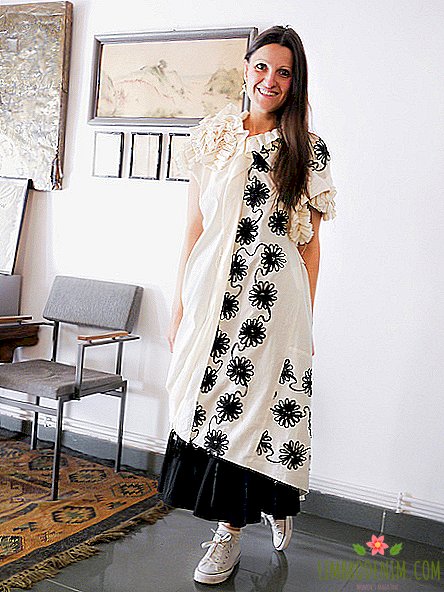The reverse side of the mass market: Why seamstresses strike in Bangladesh

Dmitry Kurkin
Strike continues in Bangladesh workers of the sewing enterprises; they demand salary increase. Mass protests, already developed into clashes with the police, unfold against the backdrop of the political turbulence in which the country has fallen after the recent parliamentary elections. The current unrest can turn into not only disruptions in the supply of international retailers like H & M, but also a major humanitarian crisis.
Bangladesh is one of the world's sewing centers (more clothes are produced only in China, and not much more), the country's economy depends heavily on the local garment industry, which exports up to 80 percent of its products (about 30 billion in US dollars). But despite this, the wages of factory workers are still extremely low. Each significant increase is given to them with difficulty (they managed to knock out the last one in 2013), and the calls of the Vice-President of the Association of Sewing Producers and Exporters of Bangladesh to “peacefully return to work” and wait for the calendar indexation of wages, which happens twice a year, do not act.
This is how one of the protesters explains her position, 23-year-old seamstress Ayesha Hatun: "As a lower-level worker, I get eight thousand takas, two thousand of whom I spend on renting my hut, three thousand on food and another thousand on other needs. For the children who live in the village, I have only two thousand left. " Eight thousand taka (at the current rate it is a little more than six thousand rubles) - the lowest rate even by the standards of Bangladesh, where the average salary in 2017 was about 13 thousand taka.
Last Sunday, the country's government promised to make concessions and more than double the minimum monthly salary from 8 thousand to 18,257 taka (from about six and a half to fourteen and a half thousand in terms of rubles at the current rate). However, the majority of trade unions called the proposed conditions unacceptable, and at the same time complained of local arbitrariness, which in fact nullified the promised increases. "After the salary increases, some workers told me that they were lowered. They were supposed to be in the fourth, and they were assigned the sixth," said Amirul Amin, head of the National Federation of Sewing Enterprises. “I’ve met people who have been working for more than ten years and are still in the sixth category,” said other trade union leader Babul Actor.
This kind of neglect, as well as pressure from the Association of Sewing Manufacturers and Exporters, which threatened to close factories in the event of a continuation of the strike, do not contribute to a compromise. On Tuesday, police tried to disperse the strikers, who staged a demonstration near Dhaka, the capital of Bangladesh, using rubber bullets and tear gas against them, causing one of the protesters to die. It is also reported that the protesters began to erect barricades.
Most of the trade unions called the proposed conditions unacceptable, and at the same time complained about local abuses, which in fact zeroed the promised increases
Large-scale strike complicates the already difficult political situation in Bangladesh, which is on the verge of another political crisis. Observers note that a dictatorship was actually established in the country after the parliamentary elections in late December: after the vote count, it was announced that the current ruling party of the Awami League, headed by Bangladesh Prime Minister Sheikh Hasina Wazed, won 98 percent of the vote and received 288 of 298 the parliament. This result surprised the opposition in the face of the Nationalist Party of Bangladesh (BNP), which called the election a "farce". BNP leader Khaled Zia said that her party still enjoys great support among the population and is "represented everywhere except in parliament." She made a statement from the prison where she was sent two months before the election, condemning the corruption case - neither her nor ten of her party members had been allowed to participate in the elections.
According to Human Rights Watch, the results of the vote that surprised many people became possible as a result of harsh persecution of the opposition, intimidation of voters and mass fraud. Thus, the Awami League, apparently, decided to put an end to the confrontation of two party clans, to which the political history of Bangladesh has been reduced since the early nineties.
The main pieces on this chessboard are 71-year-old Hasina, who became the leader of the Awami League after the death of her father, Mujibur Rahman (killed along with almost all her relatives during the 1975 military coup), and 73-year-old Zia, the widow of the former BNP leader Ziaur Rahman (he became president of Bangladesh in 1977, but in 1981 he fell victim to the coup). Until 1990, Zia and Hasina fought against the dictatorship of General Ershad, however, having achieved his departure, they could not divide power between themselves: for the last three decades, they succeeded each other at the helm of the country and the rule of each turned into major political scandals.
The current term of the Hasina, crowned with escaping from Bangladesh by at least 1,300 members of the Rohingya ethnic group, will not be an exception. Several years ago, they, in turn, fled from Myanmar, fleeing from anti-Muslim pogroms, and now seriously fear that they will be deported back.
PHOTO: EPA TASS MONIRUL ALAM




